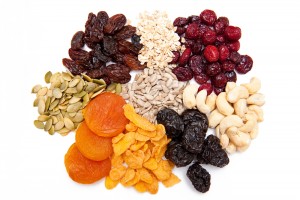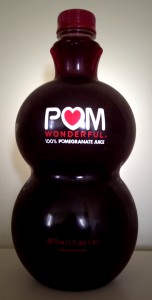
FDA’s steadfast position against formally addressing “Natural” claims on food products may soon be forced to change if the Safe and Accurate Food Labeling Act, which the House of Representatives passed on July 23, 2015, is enacted.
The Safe and Accurate Food Labeling Act (“SAFLA”) serves largely to prohibit state and local governments from enacting laws requiring food products containing GMOs to be labeled as such. It also addresses “natural” labeling claims, which have been a hotly litigated issue in recent years.
SAFLA is premised on the notion that the presence of GMOs in a food product is not information that is material for distinguishing between such a food and a comparable food product not produced from or containing GMOs. Therefore, labeling is not necessary.
SAFLA does provide consumers, the food industry, trading partners, and other interested parties with a clear affirmation of safety for foods produced from, containing, or consisting of genetically engineered plants.
The bill now moves along to the Senate. If the Senate passes the legislation in identical form, it will be final once signed into law by the President.
There are two notable subjects addressed under SAFLA. First, no state or political subdivision of any state may directly or indirectly establish under any authority or continue in effect as to any food in interstate commerce any requirement regarding use of genetically engineered plants for use in a food product that is not identical to the notification program established under SAFLA. Second, SAFLA directs FDA to formally address “natural” claims on food product labels.
SAFLA Provides Guidelines for Voluntary GMO-Labeling
Title II of the Act addresses Genetic Engineering Certification. SAFLA establishes a voluntary genetically engineered food certification program under USDA. This certification program governs label claims regarding use or non-use of genetic engineering in food products.
The Secretary of Agriculture is responsible for establishing the voluntary genetically engineered food certification program which will govern labeling with respect to use of genetic engineering in food production. The program will establish standards for selling or labeling a covered product as being GMO-free, or produced without use of genetic engineering. This will ensure a nationally-uniform manner of labeling.
SAFLA Directs FDA to Define and Regulate “Natural” Claims
Title III addresses “Natural” food labels. Under SAFLA, a food is deemed misbranded if its labeling contains an express or implied claim that the food is “natural” unless the claim uses the terms that have been defined by, and the food meets the requirements established in, FDA promulgated regulations. Natural claims include the following: “natural,” “100% natural,” “naturally grown,” “all natural,” “made with natural ingredients” and any other terms specified by Secretary.
What can we expect if SAFLA is enacted?
If the legislation passes the Senate and is signed into law by the President, states will be prohibited from issuing mandatory laws for foods containing certain GMO and states will be prohibited from requiring foods containing GMOs to be labeled as such. Further, the legislation will prohibit state and local governments from regulating GMO plants.
States will also be prohibited from making it unlawful for companies to label products containing GMOs as “natural.” In place of state by state laws regarding “natural” labeling, FDA would be required to set formal requirements for “natural” labeling, something it has steadfastly avoided doing for years. Specifically, the legislation directs FDA to establish rules formally defining how “natural” labeling can and should be used on food products. FDA currently has only an informal policy stating that foods labeled as “natural” cannot contain any added colors, artificial colors, artificial flavors, or synthetic ingredients.
Companies would be permitted to voluntarily label foods that do or do not contain GMO ingredients, but they would not be required to do so. The legislation directs the Department of Agriculture to establish a voluntary nongenetically engineered food certification program that would govern labeling of non-GMO food products in a uniform manner across the country. This is modeled after the largely successful USDA Organics program. A program like this would relieve companies in the food industry from any obligation to disclose use of GMOs in their product.
Companies voluntarily labeling products as GMO-free would need to follow a standard established under the legislation. The legislation directs creation and implementation of a process to certify GMO-free food; therefore, a company labeling product as GMO-free may do so through the USDA-accredited certification process.
FDA would also be responsible for publishing and maintaining an online registry listing all genetically engineered plants intended to be used in food products. If a producer intends to use a non-regulated genetically-engineered plant in its food products, it would first have to receive FDA approval that the food is as safe as comparable foods.
What are SAFLA’s proponents saying?
Proponents of the bipartisan legislation argue that GMOs have been deemed safe by FDA and science has repeatedly found that they are not harmful or unsafe. Advocates stand behind findings of numerous renowned, well-respected groups that have all found GMOs to be safe. Such groups include FDA, World Health Organization, American Medical Association, National Academy of Sciences, and American Association for the Advancement of Science. Because GMOs have been found not to be harmful or unsafe, proponents argue that requiring products to be labeled as containing GMOs would cause undue alarm to consumers.
Without national legislation, a “patchwork” of state laws would increase prices, drive up food costs, and continue the rash of class action lawsuits currently bombarding food manufacturers. Variations in state laws also disrupts the free flow of goods across our nation and threatens interstate commerce. Consumers’ interests are also negatively affected by varying laws because the inevitable result is that product labels are inconsistent and present confusing information for consumers. The absence of a national standard risks spreading misinformation.
But, for now…
While it is unknown how long it will be before SAFLA is voted on in the Senate, members of the food industry should not be sitting back waiting and watching. Companies facing litigation involving “natural” or GMO-related labeling claims should certainly attempt to use this legislative action in defending (or at least staying) litigation against them. Stay tuned. Time will tell how both the judicial branch and legislative branch will react to last week’s passage in the House.
Please feel free to contact a member of Cozen O’Connor’s Food and Beverage industry team for more information about the subject of this blog post or how Cozen O’Connor can be of help to you and your organization.
About The Author

 What it means for food to be “natural” has become a topic of contentious debate, and the Food and Drug Administration (“FDA”) entered the fray earlier this year, requesting comments on use of the term on food labeling. Some courts, including the U.S. Court of Appeals for the Ninth Circuit, have stayed lawsuits centering on use of “natural” on food labels. These stays have been granted on primary jurisdiction grounds, with the courts waiting for the FDA to speak on the issue before moving forward with the cases before them.
What it means for food to be “natural” has become a topic of contentious debate, and the Food and Drug Administration (“FDA”) entered the fray earlier this year, requesting comments on use of the term on food labeling. Some courts, including the U.S. Court of Appeals for the Ninth Circuit, have stayed lawsuits centering on use of “natural” on food labels. These stays have been granted on primary jurisdiction grounds, with the courts waiting for the FDA to speak on the issue before moving forward with the cases before them. The GMO war rages on after a close vote in the Senate last week addressing proposed voluntary, national standards for GMO labeling. A 48-49 split means the Senate failed to invoke cloture to bring the Biotechnology Labeling Solutions Bill to vote.
The GMO war rages on after a close vote in the Senate last week addressing proposed voluntary, national standards for GMO labeling. A 48-49 split means the Senate failed to invoke cloture to bring the Biotechnology Labeling Solutions Bill to vote. FDA took long-awaited and much-anticipated steps this week to address the requests of both consumers and food manufacturers and producers for guidance and regulation on use of the term “natural.” For years now, consumer litigation alleging false labeling and misrepresentation claims have been piling up on dockets while FDA declined to take any affirmative steps to address the term’s lack of a definition or regulation. Courts, consumers, and industry members alike have repeatedly requested FDA to get involved.
FDA took long-awaited and much-anticipated steps this week to address the requests of both consumers and food manufacturers and producers for guidance and regulation on use of the term “natural.” For years now, consumer litigation alleging false labeling and misrepresentation claims have been piling up on dockets while FDA declined to take any affirmative steps to address the term’s lack of a definition or regulation. Courts, consumers, and industry members alike have repeatedly requested FDA to get involved.
 The increased acceptance of social media as a means to providing notice – whether of a class action settlement or of a Summons and Complaint – is reflective of the dramatic change in the way we interact with one another, and represents a step in the right direction in providing real, targeted notice to litigants and protecting their due process rights. As Minnesota Judge Kevin Burke noted in the case of Mpafe v. Mpafe, “[t]he traditional way to get service by publication is antiquated and is prohibitively expensive…[s]ervice is critical, and technology provides a cheaper and hopefully more effective way of finding respondent.” There’s no doubt we’ve become more social. Pretty soon we may even be speaking with each other on elevators.
The increased acceptance of social media as a means to providing notice – whether of a class action settlement or of a Summons and Complaint – is reflective of the dramatic change in the way we interact with one another, and represents a step in the right direction in providing real, targeted notice to litigants and protecting their due process rights. As Minnesota Judge Kevin Burke noted in the case of Mpafe v. Mpafe, “[t]he traditional way to get service by publication is antiquated and is prohibitively expensive…[s]ervice is critical, and technology provides a cheaper and hopefully more effective way of finding respondent.” There’s no doubt we’ve become more social. Pretty soon we may even be speaking with each other on elevators. Kind, LLC received a rude awakening from the FDA when it notified the popular snack-maker that it was violating numerous federal regulations by allegedly misbranding four popular products. Kind is known for its widely-popular snack bars which are marketed as “wholesome,” “tasty,” and “convenient.” FDA’s warning prompted even more problems for Kind as the first class action was filed against it just three days later, mirroring FDA’s warning.
Kind, LLC received a rude awakening from the FDA when it notified the popular snack-maker that it was violating numerous federal regulations by allegedly misbranding four popular products. Kind is known for its widely-popular snack bars which are marketed as “wholesome,” “tasty,” and “convenient.” FDA’s warning prompted even more problems for Kind as the first class action was filed against it just three days later, mirroring FDA’s warning.
